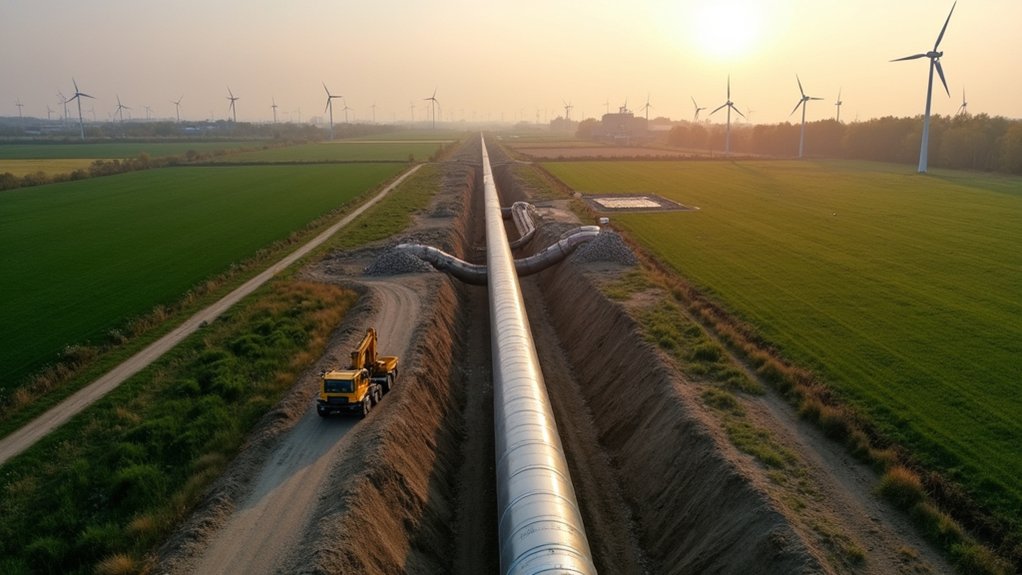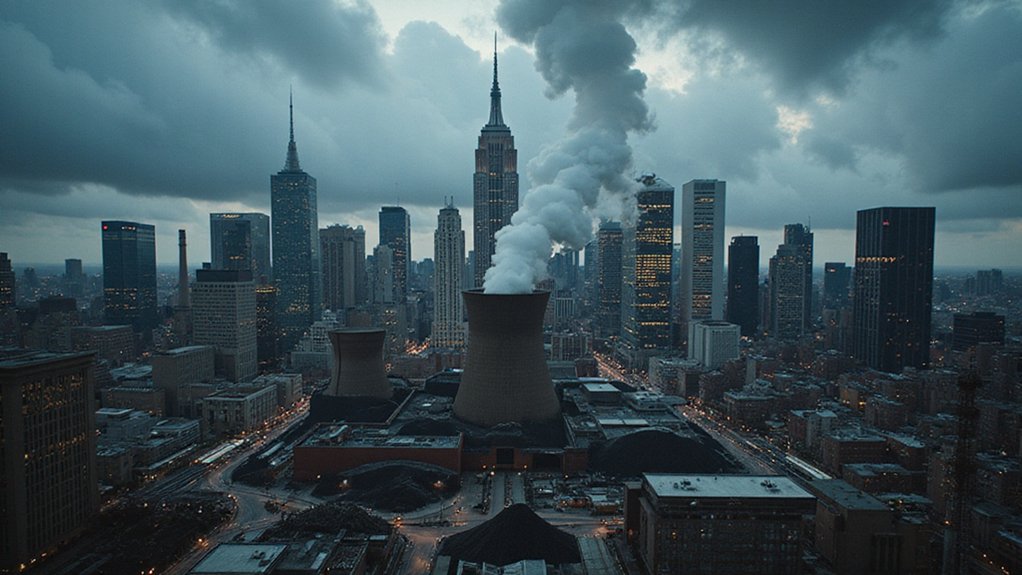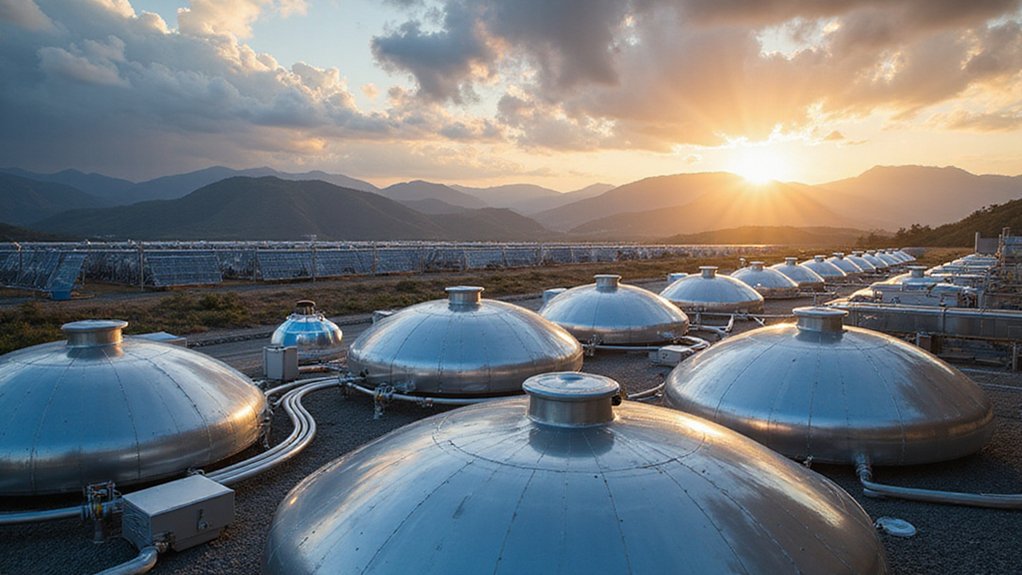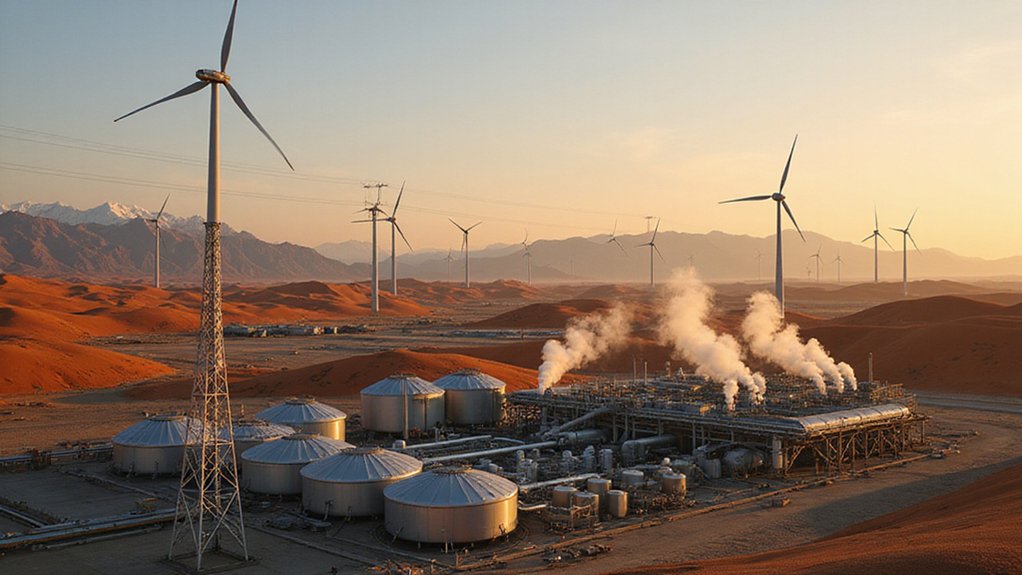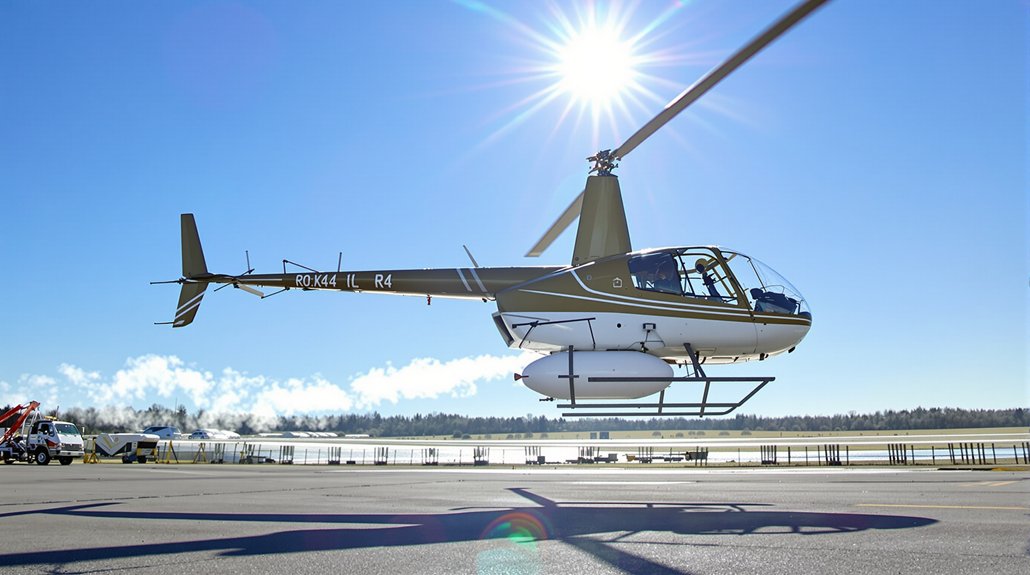A major transformation is underway along the German-Dutch border as a 52-kilometer natural gas pipeline gets a new purpose. The pipeline, which runs between Vlieghuis in the Netherlands and Ochtrup in Germany, is being converted to transport 100% hydrogen instead of natural gas.
German operator Thyssengas is managing this significant project. Work has already begun near Hoogstede, close to the border. The goal is to have the pipeline ready for hydrogen transport by 2027.
Thyssengas leads this border transformation, with work underway and hydrogen flow expected by 2027.
This isn’t just a small local project. The converted pipeline will become part of a much larger network. It will connect to Germany’s planned 9,000-kilometer hydrogen core network. This project aligns with Germany’s goal to complete 525km of pipelines in 2025 as part of its national hydrogen infrastructure. This initiative supports the global renewable energy boom that added 507 gigawatts of capacity in 2023. This creates a crucial link between Dutch hydrogen production sites and German industrial users. The initiative is a vital component of the Northwest European hydrogen backbone that will significantly enhance cross-border energy infrastructure.
Rather than building new infrastructure, engineers are updating the existing natural gas pipeline. They’re making technical and safety upgrades to guarantee it can safely carry pure hydrogen. Unlike some other projects, this pipeline won’t mix hydrogen with natural gas.
The project strengthens energy teamwork between Germany and the Netherlands. It’s designed to be a key piece of the Northwest European hydrogen backbone. This network will eventually connect Dutch ports like Rotterdam and Amsterdam with industrial regions in Germany.
For industry, this pipeline offers a path to cleaner operations. Hydrogen can replace fossil fuels in many industrial processes, helping companies reduce their carbon emissions. The pipeline supports Europe’s goal to become a world leader in hydrogen use.
The conversion also makes environmental sense. Transporting hydrogen by pipeline is more efficient than other methods. It helps connect green hydrogen production sites with the places that need this clean energy.
References
- https://hydrogeneurope.eu/thyssengas-starts-work-on-52km-hydrogen-pipeline-link-on-dutch-german-border/
- https://www.h2-view.com/story/gascade-begins-filling-german-hydrogen-pipeline-project-flow/2122932.article/
- https://www.hydrogeninsight.com/innovation/germany-due-to-complete-first-525km-of-national-hydrogen-pipeline-network-this-year/2-1-1760373
- https://hydrogeneurope.eu
- https://www.h2-view.com/story/thyssengas-starts-work-on-52km-hydrogen-pipeline-link-on-dutch-german-border/2131387.article/
